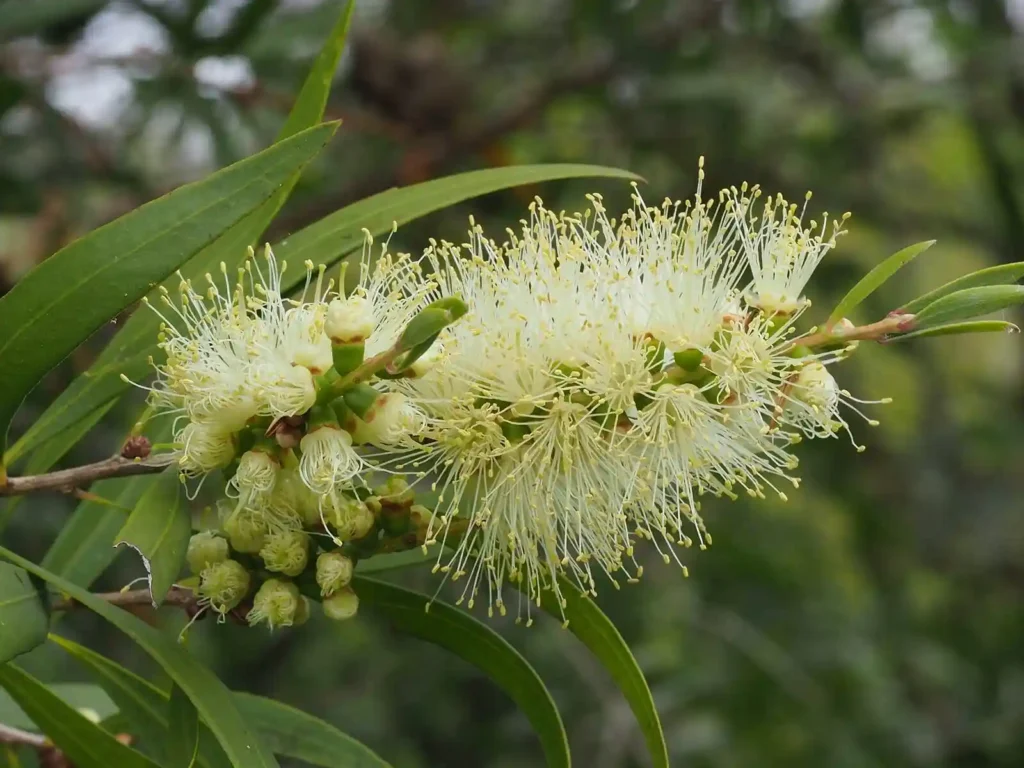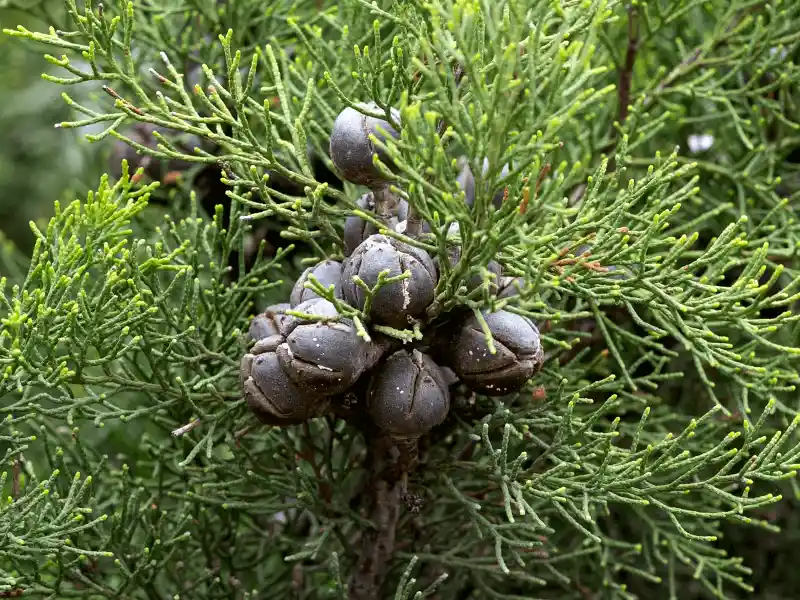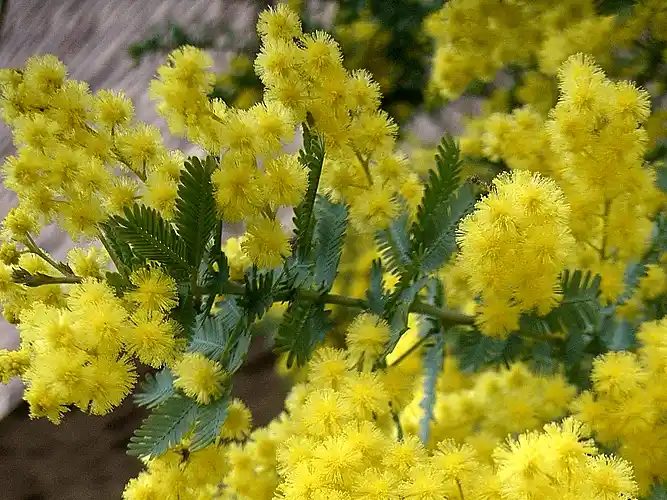
| Botanic name | Angophora hispida |
| Other names | Dwarf apple gum, dwarf apple, scrub apple |
| Main Origin | Central Coast New South Wales |
| Mature size | 3 – 5 m x 4 – 8 m (w x h) |
| Mature form | Compact with a rounded, lightly open canopy |
| Foliage | Egg-shaped or elliptical, greyish-green or olive-green |
| Growth rate | Moderate to Fast |
| Position | Full sun |
| Soil | Adaptable to various well-drained soil types |
| Water | Deep watering during prolonged dry periods |
| Climate | Subtropical, warm & cool temperate, and Mediterranean |
| Flower | Creamy white from spring to early summer |
| Use | Feature tree, shade tree, screening, avenue planting |
| Notes | Ideal for coastal sites |
IN THIS ARTICLE
A charming icon of Australian Landscapes
In the vibrant world of native Australian flora, Angophora hispida – commonly known as Dwarf Apple Gum – stands out as a distinctive tree that captures the spirit of the outback.
It is a captivating small eucalypt that has garnered attention for its unique beauty and versatility in the garden. With a compact stature, attractive rough bark, and delightful foliage, this species offers a refreshing twist on traditional eucalypt plantings.
Dwarf Apple Gum is a remarkable piece of natural art that embodies the resilience and charm of Australia’s native flora. It is no surprise that this plant has become increasingly popular in urban and suburban gardens.
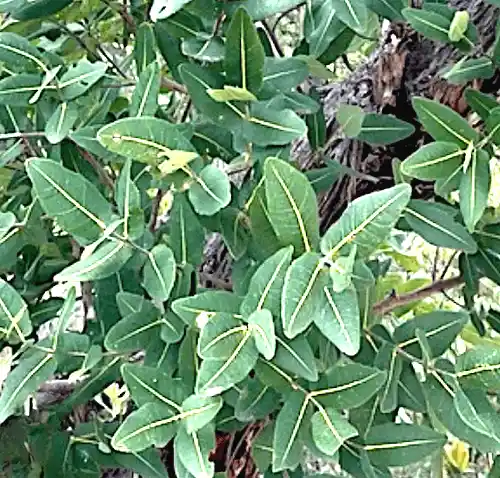
Origin and distribution
Native to the central coast of New South Wales, Angophora hispida thrives on infertile sandstone soils that drain water quickly. Its resilience to less-than-ideal soil conditions, and tolerance for periodic drought and moderate frost, have enabled it to secure its place in this natural landscape.
Although many Angophora species are well known for their broad distribution in the coastal and inland regions, Dwarf Apple Gum favours drier temperate, and subtropical climate zones. Its main distribution spans east and southeast coastal and subcoastal Australia.
Angophora species were nicknamed “apples” by European settlers because of their similarity to apple trees. As a smaller compact species, Angophora hispidia was commonly known as “Dwarf Apple”. As confusing as it sounds, it makes sense that “Dwarf Apple Gum” is used instead for clarity.
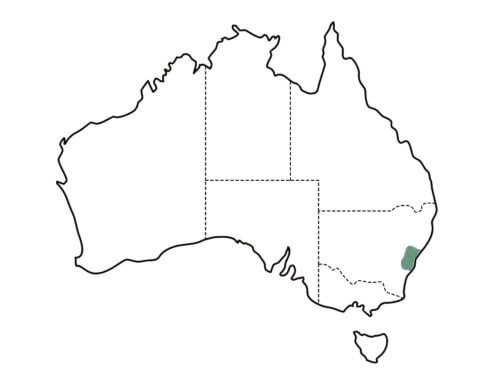
Compact growth
Unlike many Angophora species, which can grow into majestic, high-reaching trees, Dwarf Apple Gum is modest in stature, typically reaching only 4 – 8 m at maturity. Its relatively low profile makes it ideal for urban gardens, courtyards, and smaller landscapes where space is limited yet the allure of a native tree is desired.
Due to its multi-stemmed mallee habit, Dwarf Apple Gum can become a dense spreading shrub with dedicated periodic pruning. However, the best way to showcase its striking ornamental character is to train it into a compact, single-stemmed tree, by removing unwanted stems while the tree is young.
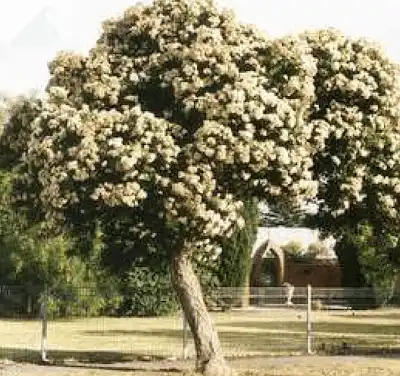
Gnarled trunk and branches
The trunk of Angophora hispida is gnarled with fibrous, flaky, and light brown or greyish bark that evokes a strong, rugged character.
Twisted branches emerge in a seemingly random, yet captivating pattern with a contorted, time-worn appearance. These branches add layers of complexity and texture, emphasising the tree’s inherent resilience and age-old charm.
With the gnarled trunk and branches, Angophora hispida is a living piece of weathered art, a focal point of fascination in any landscape.
Intriguing foliage
Angophora hispida has beautiful lush foliage integral to the tree’s natural appeal. Its leaves are often grey-green or olive-green, broadly egg-shaped, or elliptical, arranged in pairs along its branches.
The leaves of Angophora hispida are thick and have a sandpaper-like texture, as they are covered in a dense layer of rough, bristly hairs. The word “hispida” is a Latin word meaning “bristly’ or “covered with coarse hairs”.
In the growing season, the foliage is interspersed with a bronzy or reddish tinge of the new growth covered in coarse hairs. These hairs can serve as a protective layer against harsh sunlight and herbivore consumption.
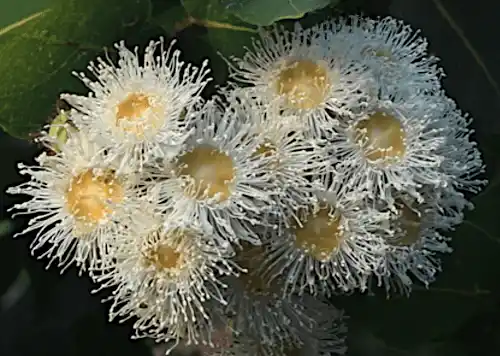
Attractive flowers
In spring and early summer, creamy-white flowers emerge from red hairy buds in large clusters at the branch tips. These dense, eye-catching flowers contrast beautifully with the tree’s rugged bark and green foliage. Each flower brings subtle sweetness and fragrance, attracting native pollinators such as birds and bees.
FAQs
How do you care for Angophora hispida?
Angophora hispida is a relatively low-maintenance tree that thrives with minimal care when planted in the right conditions. To ensure its healthy growth, choose a location that receives full sun and has well-drained soil, as this species prefers a drier, open environment.
During the first year, water regularly so the plant can develop a strong root system. Once established, it is highly drought-tolerant and requires only occasional supplemental watering during extended dry spells. Remove dead or damaged branches and prune the tree to maintain a natural, gnarled shape.
Adding a layer of organic mulch around the base can help retain soil moisture and regulate temperature. Although fertilisation is generally unnecessary if the soil is healthy, a light application of balanced fertilizer in early spring can support vigorous growth.
What is the lifespan of an Angophora?
Angophora species are known for their impressive longevity. In optimal conditions, they often flourish for well over a century. Many trees in this genus, such as Angophora costata and Angophora hispida, can live 100 years or more, with some even reaching ages of 150 years or beyond in favorable environments.
What kind of soil does Angophora hispida like?
Angophora hispida thrives best in well-drained soils that reflect the conditions of its native Australian bush. It favors sandy soils, which are often low in nutrients. These soil types allow for excellent drainage, preventing waterlogging and reducing the risk of root rot – a crucial factor for its health. While it can tolerate relatively poor, infertile soils, applying organic matter at planting can help promote robust growth in its early stages.
